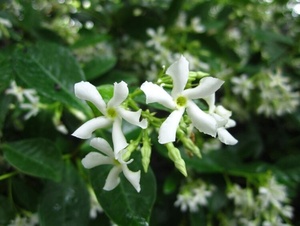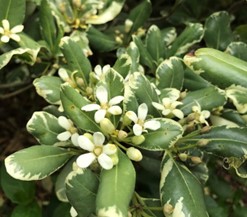About Japanese Friendship Garden San Diego
Officially opened in 1991, the Japanese Friendship Garden of San Diego is a representation of San Diego’s relationship with its sister city Yokohama. The Japanese Friendship Garden Society in San Diego has made it their primary purpose to develop a thriving Japanese cultural center. This garden is intended to be utilized as a hub for education, local engagement, and the expansion of the Japanese culture. As a result of these intentions, the Japanese Friendship Garden provides its clients with open exhibits of nature and art. It also offers a myriad of programs that appeal to a variety of different audiences; these range anywhere from pottery repair to “survival” Japanese classes.
As for the design of the garden itself, it has been inspired by Japanese techniques and design choices that are centuries removed from the present day. It is designed to showcase the living specimen that are native to Japan (and San Diego).
The Japanese Friendship Garden now receives over 300,000 visitors annually. It was officially completed in 2015 after the last of three phases were finished. The second phase was released to the public in 1999 and added the site’s Exhibit Hall, Activity Center, and Upper Koi Pond. The third phase was finished in 2015 and introduced a large cherry tree grove, an azalea and camellia garden, a new water feature, and their Inamori Pavilion.
Admissions
An example of what type of experience might be provided to a visitor is provided in this brochure. General Admission rates range from $12 to $14. Students, seniors (65 years of age and up), and military are granted a $12 admission fee. Adults who are eighteen years of age or older are charged a $14 fee. Children ages six or younger have their admission fees waived.
Exhibitions
The Japanese Friendship Garden is the host of several exhibits and collections of Japanese cultural practices or artifacts. Most of these collections are permanent features of the Japanese Friendship Garden, some of the location’s major installments consist of the following:
Koi Collection
A prized collection of the Japanese Friendship Garden is that of their living Koi Fish exhibition. Each of the twenty fish kept and cared for are identified by species, size, and age on the garden’s website. The species of the Koi Fish are well-diversified, as there are only a few instances where two fish share the same species – the koi here are recognized by the Mayor of Yokohama and have been awarded various medals at Koi Shows. Known for their strength, courage, and beauty, Koi Fish are a powerful symbol in Japanese society. The Koi Fish kept at the Japanese Friendship Garden of San Diego are monitored by the Koi Club of San Diego, who are an organization that seeks to generate a more widespread understanding of the hobby of keeping Koi Fish.
Bonsai Permanent Collection
The art of Bonsai is one that has been admired and perfected by countless generations of Japanese. Bonsai is the act of growing mini-trees or other shrubbery in shallow pots; the term is even literally translated to mean “tray planting.” These otherwise ordinary natural specimens are shaped into their miniature form through a process of cutting, training, and shaping so that they may become more aesthetically pleasing. San Diego’s Japanese Friendship Garden is home to about twenty highly impressive bonsai that are each quite unique in their own right. From sharpened limbs, to frons, to colored leaves, these plants and the artistic expression embedded within them are displayed to visitors of the Japanese Friendship Garden. The individuality of these plants is best expressed in the associated photos:
Living Collections
Spring: Features a beautiful assortment of the Iris, Bradford Pear, Japanese Wisteria, Japanese Cherry, California Poppy, Dwarf Pomegranate, Pink Trumpet Tree, Chinese Fringe, and Flowering Peach Tree.
Summer: The Japanese Friendship Garden keeps an array of summer-blooming plants such as the Camellia, Gardenia, Hydrangea, Crape Myrtle, Yellow Daylily, and Star Jasmine.
Other Featured Plants: Other plants kept at the Japanese Friendship Garden include the Chinese Flame Tree, Indian Hawthorn, Azalea, and Mock Orange.
Programs
As an extension of the Japanese Friendship Garden of San Diego’s mission to educate the community on Japanese culture, the location offers an ever-changing catalogue of programs that patrons can attend. These programs cover many different facets of Japanese society while also being catered towards an American audience with more introductory and utilitarian programs. Some wellness activities, such as yoga and meditation, are kept year-round. The programs offered by the Japanese Friendship Garden are currently divided into four different categories:
Cultural Programs
Programs relating to the culture of Japan are in this category. Workshops such as the Kintsugi workshop introduce participants to the art of repairing pottery with lacquer derived from powdered precious metals and offers a metaphor for how we should approach adversity in our own lives.
Pop Culture Programs
These are programs that relate to the pop culture aspect of Japanese life and history. Activities are afforded to participants that allow people with outsider perspectives to engage with fully and meaningfully. These activities are created in a way that allows those people who partake to feel as though they can contribute and learn things that are meaningful to them. The currently featured program “Cosplay Labs” is advertised as an introductory course to those who want to create their own cosplay in ways that do not break the bank.
Wellness Programs
The Japanese Friendship Garden boasts a robust list of wellness programs, covering all types of wellness whether mental or physical. Instructors divulge their knowledge to participants through lectures, training, physical treatments, and various other ways. One such program focuses on the practice of QiGong, which is designed to increase one’s vital energy and is done through breathing exercises.
Sustainability Programs
Programs in this category promote aspects of sustainability that relate to our eco-system as well as modern industries. For events that are accessible to all, there are programs like “World Bee Day,” which seeks to bring awareness to the threats bees face as well as their role as key contributors to flora. Additionally, the Japanese Friendship Garden has the unique opportunity to offer environmental jobs and internships to the local community through programs such as their Sustainability Ambassador Program.
References
“Japanese Friendship Garden.” Japanese Friendship Garden, https://www.niwa.org/.
San Diego Bonsai Club, https://www.sandiegobonsaiclub.com/.
“Explore San Diego Japanese Friendship Garden.” The Official Travel Resource for the San Diego Region, https://www.sandiego.org/members/parks-gardens/japanese-friendship-garden-of-san-diego.aspx.





















